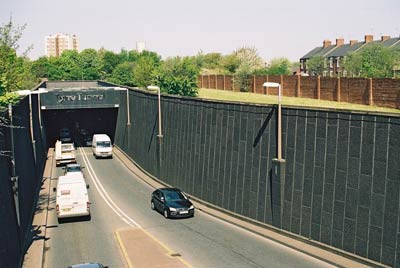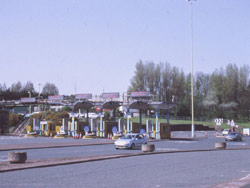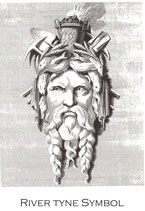
TYNE ROAD TUNNEL

Between the mouth of the river and Newcastle and Gateshead there were only ferries for vehicles and no bridges, necessitating long diversions for local traffic nearer the river mouth. The road tunnel had been authorised in 1946 together with the cyclists and pedestrian tunnels, but was put back for financial reasons. Proposals for a road tunnel were suggested in 1937 but disagreements between local authorities on the location and whether a bridge or tunnel should be the preferred means of crossing had hindered progress. However, a decision to build a tunnel between Howdon and Jarrow was eventually made in 1943. A bridge rather than a tunnel was again considered but rejected by the Tyne Improvement Commission and the Admiralty who as usual were concerned about navigbation up the river. Authorisation was finally granted in 1956. Lessons learned in building the two existing tunnels were applied in constructing the road tunnel meant that it was to be driven deeper. Escalating costs decided the Government on imposing tolls for all major new bridges and tunnels, a new act was passed and in 1961 construction finally started and the tunnel was opened by Her Majesty The Queen accompanied by H.R.H. The Duke Of Edinburgh on 19 October 1967. The cost was £12.5 million.
The tunnel is 1833 yards long and there are approach roads at either end and a gradient descending into the tunnel. The tunnel is part of the A19 road. Safety features include sun visors at the entrances, closed circuit TV, and escorts for dangerous loads. There is a Traffic Control section and breakdown recovery vehicles at each end. The tunnel cut ferry usage at the river mouth and traffic soon built up so that around 38,000 vehicles were using the tunnel before the second tunnel opened. The planned capacity was about 24,000. A second road tunnel was opened at midnight on 25 February 2011. This uses a tube in the riverbed to carry the middle section of road so tunnelling was not needed and the gradients are less steep as the tunnel is not bored deep under the river, but rests on the river bed. Click here for more details.
- Constructed - 1961 - 1967
- Position: Between Howdon and Jarrow, Tyne and Wear.
- Grid Ref: NZ 330 660

